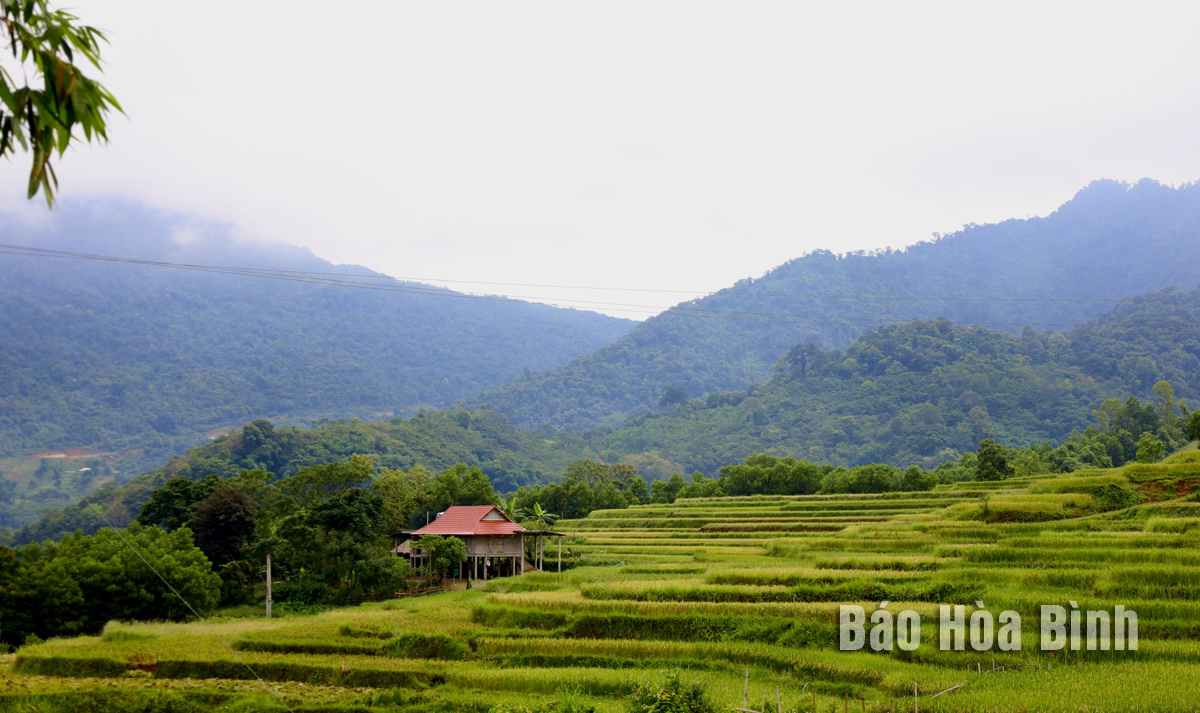
The People’s Committee of Hoa Binh province has issued Plan No. 185/KH-UBND on the organisation of the Hoa Binh Culture - Tourism Week 2024 from October 24 to November 4.

The beauty of terraced
fields - where the Mien Doi terrace field festival will take place.
The main activities include the Hoa Binh Culture - Tourism
Week and the Da River Fish-Shrimp Festival at the provincial scale, and the
Mien Doi Terrace Rice Festival at the district scale.
As scheduled, the Hoa Binh Culture - Tourism Week will take
place at Hoa Binh Square from October 25-27 with notable activities such as a
ceremony to receive a certificate which recognises archaeological sites of Xom
Trai Cave and Lang Vanh stone roof as special national relic sites, opening and
closing ceremonies and low-altitude fireworks display and a costume show of Hoa
Binh’s ethnic groups.
The second Da River Fish-Shrimp Festival will be held at the
provincial Trade and Exhibition Centre from October 24 to November 4. It will
feature a range of activities such as a fisherman's festival, releasing
lanterns on the Da River, exhibitions and auctions of specialty fish products
from Hoa Binh Lake, and a fishing tournament on the lake associated with
promoting culture and introducing its scenic beauty.
The Mien Doi terrace field festival will take place in Lac
Son district’s Mien Doi commune from November 2-3, with special activities
including a new rice festival of the Muong ethnic group, playing Muong gongs on
the terrace field, paragliding experiences and exploring the terraced fields.
The Hoa Binh Culture - Tourism Week 2024 aims to
honour and affirm the cultural values of the locality, showcasing the beautiful
landscapes, unique cultural identities of the ethnic groups, attractive tourist
spots, local agricultural products and One Commune One Product (OCOP) items to
attract domestic and international tourists.
Hoa Binh province has carried out multiple programmes and initiatives to revive its cultural heritage which has gradually fallen into oblivion through the ebbs and flows of history.
The most prominent and defining feature in the prehistoric era of Hoa Binh is the Hoa Binh Culture. The Culture was first discovered in Hoa Binh. The significant prehistoric culture represents not only Vietnam but also Southeast Asia and southern China. Through excavations of cave sites in the limestone regions of Hoa Binh, French archaeologist M. Colani introduced the world to a "Stone Age in Hoa Binh province – Northern Vietnam" in 1927. On January 30, 1932, the First Congress of Far Eastern Prehistorians, held in Hanoi, officially recognised the Hoa Binh Culture.
Known as the "Land of Epic History”, Hoa Binh province, the gateway to Vietnam’s northwest, boasts a strategic location and a unique cultural tapestry woven by its ethnic minority communities.
The People's Committee of Luong Son District recently held a ceremony to receive the certificate recognizing Sau Communal House in Thanh Cao Commune as a provincial-level historical and cultural site.
Recognising the importance of cultural heritage preservation in protecting and promoting the value system of Vietnamese culture, and serving socio-economic development in the new period, Party committees and local administrations in Hoa Binh province have identified it as a key task in the cultural development strategy. The province has been making efforts in mobilising resources, creating consensus among people and engaging ethnic communities in preserving and promoting cultural identity.
Hoa Binh province has captured growing attention both domestically and internationally for its distinctive cultural heritage and rich history. Most notably, it has been renowned for its famous Hoa Binh culture, considered the cradle of ancient Vietnamese civilisation. Looking ahead to significant milestones in 2025 and the 140th anniversary of province establishment in 2026, Hoa Binh Newspaper presents a comprehensive overview of the province's development across economic, social, cultural, tourism, and security domains.



